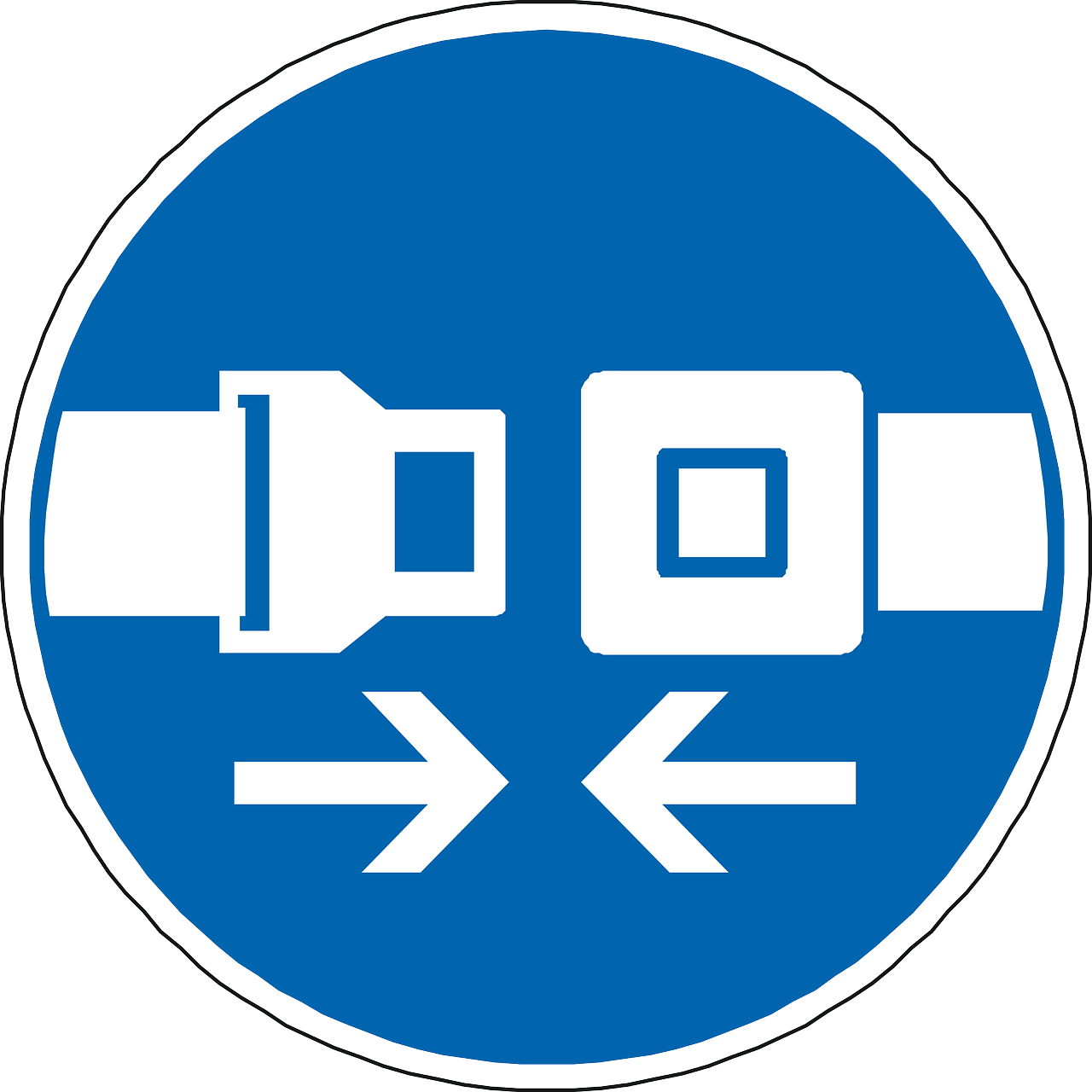On April 1st, the Department of Education finally released the last set of regulations from its epic 2019 negotiated rulemaking process. On April 3rd WCET posted an analysis of proposed changes to the definition of distance education including (finally) a proposed definition of regular and substantive interaction. Today we are examining several other aspects of the proposed regulations including changes to the definition of credit hour, changes in the calculation of correspondence education eligibility for Title IV financial aid programs, and proposed changes to defining a week of instruction for calculating an academic year. We’ll be posting a third blog later this week that examines the proposed changes to regulations associated with direct assessment and competency-based education including the definition of subscription-based programs, approval of new direct assessment programs, satisfactory academic progress in direct assessment programs, and the elimination of prohibitions against certain types of coursework that can be offered through direct assessment.
For a more comprehensive review of how we got here, check out all of our blog posts on the 2019 negotiated rulemaking process, here. You can also read the first half of WCET’s analysis, the proposed changes to the definition of distance education, here.
For the purposes of this post, we’re using the proposed regulation draft document rather than the recent Federal Register announcement. We’re doing this so it will be easier to direct you to specific language as well as make it easier for you to use any PDF program to mark up the proposed language. Buckle up because this (again) may be a wild ride.
The Proposed Regulations: Definition of a Credit Hour, 34 CFR 600.2
If you attended last year’s WCET Annual Meeting in Denver, you may remember that Under Secretary Diane Auer Jones mentioned proposed changes to the definition of a credit hour and how surprised she was that so few people seemed to be paying attention to that part of the consensus language. At the time, changes to accreditation and state authorization as well as the consensus language around the new definition of distance education was dominating the conversation and no one was giving much thought to any changes to the credit hour definition, but now that this last bucket of proposed regulations has finally been released, we have a chance to better understand what the Under Secretary was referring to.
Below is the current definition of credit hour.
Credit hour: Except as provided in 34 CFR 668.8(k) and (l), a credit hour is an amount of work represented in intended learning outcomes and verified by evidence of student achievement that is an institutionally established equivalency that reasonably approximates not less than—
(1) One hour of classroom or direct faculty instruction and a minimum of two hours of out of class student work each week for approximately fifteen weeks for one semester or trimester hour of credit, or ten to twelve weeks for one quarter hour of credit, or the equivalent amount of work over a different amount of time; or
(2) At least an equivalent amount of work as required in paragraph (1) of this definition for other academic activities as established by the institution including laboratory work, internships, practica, studio work, and other academic work leading to the award of credit hours.
Note that this current definition of credit hour is largely tied to the old equation that one credit hour roughly equals one hour of classroom instruction and a minimum of two hours of out of class work each week for approximately fifteen weeks for each semester or trimester hour of credit or ten to twelve weeks for one quarter hour of credit. Paragraph two of the current definition requires the institution to use this calculus for all non-standard classroom courses such as internships, laboratories, practica, or studio work.
What is being proposed? (pages 47-52 and 287-288)
The proposed definition of credit hour reads as follows and can be found on pp 287-288 of the proposed regulations.
Credit hour: Except as provided in 34 CFR 668.8(k) and (i), a credit hour is an amount of student worked defined by an institutions, as approved by the institution’s accrediting agency or State approval agency, that is consistent with commonly accepted practice in postsecondary education and that:
- Reasonably approximates not less than—
- One hour of classroom or direct faculty instruction and a minimum of two hours of out-of-class student work each week for approximately fifteen weeks for one semester or trimester hour of credit, or the equivalent amount of work over a different period of time; or
- At least an equivalent amount of work as required in paragraph (1)(i) of this definition for other academic activities as established by the institution, including laboratory work, internships, practica, studio work, and other academic work leading to the award of credit hours; and
- Permits an institution, in determining the amount of work associated with a credit hour, to take into account a variety of delivery methods, measurements of student work, academic calendars, disciplines, and degree levels.
What is different?
Although the Department proposes to largely continue the time-based requirements found in the current credit hour definition, it proposes a couple of potentially significant modifications.
Accrediting agency and state approval
In alignment with the language in previously adopted regulations, the Department is proposing that an institution’s accreditor or state approval agency be the final arbiter for what constitutes a credit hour.
Delivery methods, measurement of student work, and other factors
For the first time, the Department is suggesting that the traditional calculus of determining a credit hour may not work for every incident of learning. By including paragraph two, the proposed definition would allow institutions to take into consideration a number of factors beyond the traditional one hour of class and two hours of out of class work. This could, in effect, allow institutions to assign a larger number of credit hours to courses that they can show require more student work. In its rationale for the proposed change, the Department specifically calls out laboratory courses as examples of learning experiences that often carry the same number of credit hours as non-laboratory courses but usually require a greater number of hours of student work.
What is the Department’s rationale for the proposed changes?
In providing its rationale for the proposed changes, the Department explains that although the Higher Education Act uses the credit hour as a proxy for learning, it was never meant to be anything other than a measure of faculty workload for determining pensions. The Department admits on page 50 that “the Department has no evidence that students complete the requisite two hours of out of class work required by the current definition, nor has the Department ever enforced or required institutions to prove that such homework is being completed.” The rationale goes on to explain that the Department “is concerned that students enrolled in most laboratory classes do not receive credit for out-of-class hours, even though such classes typically do have intense homework requirements that are necessary to carry out work in the laboratory.” The Department originally proposed to eliminate the traditional time-based requirements for defining the credit hour, but the subcommittee disagreed with this approach and insisted on retaining the time-based requirements while also proposing language that would give institutions some flexibility in awarding a greater number of credits for courses that require more out of class work. Interestingly, and in a somewhat unusual step, the Department’s rationale for this change signals that it disagrees with the consensus language. On pages 52-53, the Department writes:
However, the Department continues to be concerned that, despite agreement that the institutions must be consistent in the way that they assign credit hours, in practice institutions and accreditors assign different values to laboratory classes than they do to lecture classes. For example, a student who takes a lecture class that meets for three hours per week, and who is expected to do two hours of homework for each hour spent in class, is awarded three credits. This, despite ample evidence that most students do not spend anywhere near the amount of time doing homework that they are given credit for in the credit hour definition. On the other hand, a student who spends three hours in a laboratory class, and who is more likely to actually complete homework assignments since laboratory classes generally require considerable preparation as well as laboratory reports after-the-fact, receives only one credit… The Department wishes to call attention to the need to be consistent in the way that institutions and accreditors measure a credit hour, and that it may no longer be justifiable to treat lecture and laboratory classes differently when assigning credit.
Why you may want to comment
 Although not directly tied to distance education and educational technology, the Department’s proposed definition of credit hour would, theoretically, allow institutions to take into consideration a number of factors when determining credit hours including delivery methods, level of work, and student learning. This may not impact all institutions, but for those institutions interested in competency-based education, developing or expanding STEM programs, or creating programs closely aligned with workforce needs, the pivot of defining a credit hour solely based on time to include student learning is significant.
Although not directly tied to distance education and educational technology, the Department’s proposed definition of credit hour would, theoretically, allow institutions to take into consideration a number of factors when determining credit hours including delivery methods, level of work, and student learning. This may not impact all institutions, but for those institutions interested in competency-based education, developing or expanding STEM programs, or creating programs closely aligned with workforce needs, the pivot of defining a credit hour solely based on time to include student learning is significant.
The Proposed Regulations: Conditions of Institutional Ineligibility (Correspondence Education), 34 CFR 600.7
Currently, students at an institution are not eligible for Title IV financial aid if the institution offers more than 50 percent of its courses by correspondence or enrolls 50 percent or more of its students in correspondence education.
What is being proposed? (pages 68-70 and 292)
The Department proposes the addition of a new paragraph (b)(2) that stipulates that “a student is considered ‘enrolled in correspondence courses’ if the student’s enrollment in correspondence courses constituted more than 50 percent of the courses in which the student enrolled during an award year.”
What is different?
The proposed definition would allow a student to take up to 50 percent of their coursework during an award year via correspondence without being counted as a correspondence student for the calculation of the institution’s Title IV financial aid eligibility.
What is the Department’s rationale for the proposed changes?
Current regulations do not address how a student enrolled in some correspondence education should impact an institution’s Title IV eligibility. The Department originally proposed to define a student enrolled in correspondence courses as a student who was enrolled entirely in correspondence courses during an award year. Subcommittee members argued that this all or none approach would create a loophole whereby a student could enroll in a single non-correspondence course and thus not be considered in the institution’s calculations for Title IV eligibility. As a result, the number of institutions eligible to participate in Title IV financial aid programs would greatly expand and could include the award of financial aid for previously non-included programs and institutions. The subcommittee settled on a compromise that looks at what a student is mostly enrolled in for determining whether or not a student is enrolled in correspondence courses.
Why you may want to comment
Although not directly tied to distance education and educational technology, the Department’s proposed changes in calculating institutional eligibility for participation in Title IV financial aid programs could expand the number of participating institutions and participating students. This could have an impact on the amount of aid available to all institutions and students.
The Proposed Regulations: Academic Year and Week of Instructional Time, 34 CFR 668.3
34 CFR 668.3 includes a week of instructional time in the minimum requirements for determining an institution’s academic year. Currently a week of instructional time is defined as “any week in which at least one day of regularly scheduled instruction or examinations occurs or, after the last scheduled day of classes for a term or payment period, at least one day of study for final examinations occurs.” This definition assumes that institutions must schedule at least one day of instruction each week which favors synchronous instruction over asynchronous instruction.
What is being proposed? (pages 108-113 and 305)
The proposed definition of week of instructional time reads as follows and can be found on page 305 of the draft document. Note the addition of paragraph (ii) (A) and (B).
Academic Year: ….
- A week of instructional time is any week in which—
- At least one day of regularly scheduled instruction or examinations occurs, or, after the last scheduled day of classes for a term or payment period, at least one day of study for final examinations occurs; or
- (A) In a program offered using asynchronous coursework through distance education or correspondence courses, the institution makes available the instructional materials, other resources, and instructor support necessary for academic engagement and completion of course objectives; and
- (B) In a program using asynchronous coursework through distance education, the institution expects enrolled students to perform educational activities demonstrating academic engagement during the week.
What is different?
 For the first time, the Department recognizes that instructional time will look and operate very differently for asynchronous instruction than synchronous face-to-face instruction. This significantly impacts most forms of distance education and the proposed definition removes the assumption that asynchronous distance education courses must operate as default synchronous face-to-face courses by scheduling at least one day of instruction each week.
For the first time, the Department recognizes that instructional time will look and operate very differently for asynchronous instruction than synchronous face-to-face instruction. This significantly impacts most forms of distance education and the proposed definition removes the assumption that asynchronous distance education courses must operate as default synchronous face-to-face courses by scheduling at least one day of instruction each week.
What is the Department’s rationale for the proposed changes?
On page 111 of the Department’s rationale for the proposed change notes that by including a least one day of scheduled instruction, the current definition of a week of instructional time…
… effectively makes it impossible for institutions to offer title IV-eligible postsecondary programs without scheduling at least one day of instruction per week. Because the statutory definition of ‘distance education’ under HEA section 103(7) specifically includes asynchronous instruction, we believe the current regulations are not consistent with Congress’ overall intent and must be revised to accommodate distance education coursework offered asynchronously.
Why you may want to comment
WCET supports the Department’s recognition that the existing definition of a week of instructional time is effectively at odds with the nature of asynchronous distance education and is pleased to see the proposed change. In addition to providing comments regarding concerns or changes to proposed regulations, it can also be advantageous to provide supportive comments on proposed regulations that you believe are a positive change. If you believe that the change to the definition of a week of instruction to include asynchronous delivery will benefit your institution and students, you may wish to comment on your support for this proposed regulation.
Commenting on the proposed regulations
Who should and how to comment
Anyone can comment on these proposed regulations during the Department’s comment period. Institutional personnel, program personnel, and private citizens can all comment. If your institution offers distance education and/or direct assessment programs, you should consider commenting on the proposed regulations.
Whether your institution plans on commenting or not does not impact your right to comment. And this is one case where often times volume may count over substance. The Department pays attention when there are multiple comments on the same topic. However, please be aware that if you are commenting as a private citizen you cannot use your institution or organization letterhead, but you can supply your name, title, and employer as context.
Directions on how to comment appear in the “Addresses” section of the notice of proposed rulemaking. You can submit comments through the Federal eRulemaking Portal as well as via postal mail or commercial delivery. The Department will not accept comments submitted by fax or email nor will it consider comments submitted after the comment period closes. To ensure that your comments are taken into consideration, remember to include the Docket ID at the top of your comments. The Department also urges that any electronically submitted comments be submitted in Microsoft Word. All comments must be submitted by May 4th before the 32-day comment period ends.
What to say
As a former state regulator who had to sift through public comments, I can attest to how mind numbing it can become after a while. Comments that are personalized as opposed to form letters get much more attention.
- Tell your story. Who are you? How will these regulations impact you and your students? Why do you care?
- Focus your comments on what would have the greatest impact on both you and your students and explain how they would help or hurt you, your institution, and especially your students.
- And as frustrating as all of this may seem, keep your cool and be respectful. It’s possible that if left to their own devices, the poor bureaucrat reading and responding to the public comments might very well agree with you but not be in a decision-making position.
- Make suggestions on how the regulations can be improved, even if it is just requesting further clarification. Again, as a former state regulator I can attest to how much we appreciated it when someone took the time to make helpful recommendations instead of just telling us everything they thought we did wrong.
- Don’t limit your comments to concerns or suggestions for improvement; voice your support of any regulations that you think will positively impact your students and institutions. It’s just as important that the Department hear support for proposed regulations, especially if those regulations are controversial.
Next Steps
Like the previous buckets of proposed regulations that came out of negotiated rulemaking, the Department is fast tracking these regulations by keeping the public comment period only open 32 days. The comment period closes on May 4th so there is no time to waste. Once the comment period closes, the Department will review and respond to all relevant comments and publish the final regulations which, unless considered emergency regulations, will go into effect July 1, 2021. Make sure to keep an eye on WCET Frontiers for more information on these regulations, federal higher education policy, and the impact the 2020 presidential election might have on distance education. And, you can always reach out to WCET staff for further information or clarification.
We’ll be posting a third blog of our analysis of the proposed regulations later this week so check back to see what’s happening with direct assessment and competency-based education, including the definition of subscription-based programs, approval of new direct assessment programs, satisfactory academic progress in direct assessment programs, and the elimination of prohibitions against certain types of coursework that can be offered through direct assessment.
And if you aren’t already registered for WCET’s Virtual Policy Summit where we’ll be talking about this and many other timely regulatory and policy topics, you can still do so here.

Van Davis
Policy and Planning Consultant, WCET
vdavis@wiche.edu @historydoc

Image Credits:
“Comments” Image by Werner Moser from Pixabay
“Bubble” Image by Clker-Free-Vector-Images from Pixabay
“Calendar” Image by Pettycon from Pixabay

 Although not directly tied to distance education and educational technology, the Department’s proposed definition of credit hour would, theoretically, allow institutions to take into consideration a number of factors when determining credit hours including delivery methods, level of work, and student learning. This may not impact all institutions, but for those institutions interested in competency-based education, developing or expanding STEM programs, or creating programs closely aligned with workforce needs, the pivot of defining a credit hour solely based on time to include student learning is significant.
Although not directly tied to distance education and educational technology, the Department’s proposed definition of credit hour would, theoretically, allow institutions to take into consideration a number of factors when determining credit hours including delivery methods, level of work, and student learning. This may not impact all institutions, but for those institutions interested in competency-based education, developing or expanding STEM programs, or creating programs closely aligned with workforce needs, the pivot of defining a credit hour solely based on time to include student learning is significant. For the first time, the Department recognizes that instructional time will look and operate very differently for asynchronous instruction than synchronous face-to-face instruction. This significantly impacts most forms of distance education and the proposed definition removes the assumption that asynchronous distance education courses must operate as default synchronous face-to-face courses by scheduling at least one day of instruction each week.
For the first time, the Department recognizes that instructional time will look and operate very differently for asynchronous instruction than synchronous face-to-face instruction. This significantly impacts most forms of distance education and the proposed definition removes the assumption that asynchronous distance education courses must operate as default synchronous face-to-face courses by scheduling at least one day of instruction each week.


5 replies on “New Regulations Review #2: Credit Hour, Title IV Eligibility, & What Exactly is a Week?”
[…] New Regulations Review #2: Credit Hour, Title IV Eligibility, & What Exactly Is A Week? […]
[…] to the distance education definition, including regular and substantive interaction here, and part two details proposed changes to the credit hour, week of instruction, and calculating correspondence students here. The final […]
[…] Back in April, WCET published three blog posts outlining the proposed regulations on April 3rd, April 6th, and April 13th. I know that seems like a lifetime ago but many of us have been anxiously awaiting […]
[…] of those students can potentially lose out on federal or state financial assistance. Additionally, credit-hour thresholds require students to have a certain number of credit hours to receive funding. That can lead to less […]
[…] of those students can potentially lose out on federal or state financial assistance. Additionally, credit-hour thresholds require students to have a certain number of credit hours to receive funding. That can lead to less […]